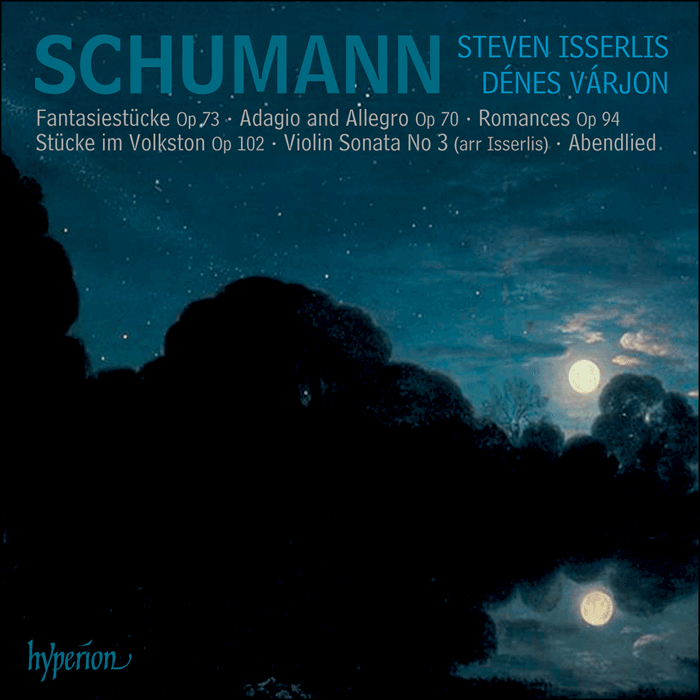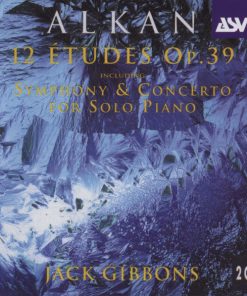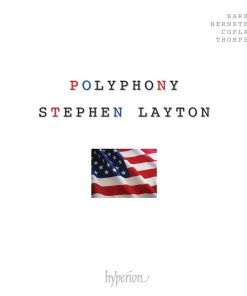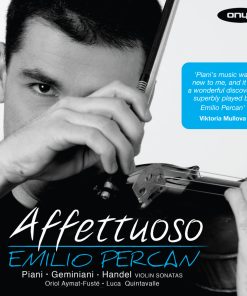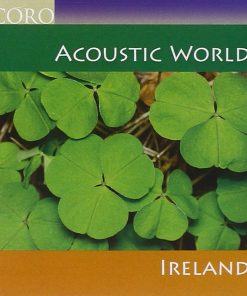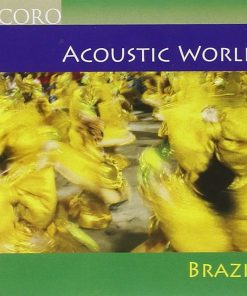Schumann: Music for Cello & Piano – Steven Isserlis, Dénes Várjon Hyperion
$ 20,99 $ 12,59

Soiréestücke ‘Fantasiestücke’ Op 73[11’24]
1 Zart und mit Ausdruck[4’09]
2 Lebhaft, leicht[3’09]
3 Rasch und mit Feuer[4’06]
Adagio and Allegro for cello and piano Op 70[8’53]
4 Adagio[4’17]
5 Allegro[4’36]
Violin Sonata No 3 in A minor WoO27[19’58]arr. Steven Isserlis (b1959)
6 Ziemlich langsam – [Lebhaft][7’05]
7 Scherzo: Lebhaft[3’12]
8 Intermezzo: Bewegt, doch nicht zu schnell[3’21]
9 Finale: Markiertes, ziemlich lebhaftes Tempo[6’20]
Zwölf Vierhändige Clavierstücke für kleine und grosse Kinder Op 85arr. Joseph Joachim (1831-1907)
10 Abendlied[3’04]
Romanzen for cello and piano Op 94[11’04]
11 Nicht schnell[3’10]
12 Einfach, innig – Etwas lebhafter[3’50]
13 Nicht schnell[4’04]
Fünf Stücke im Volkston Op 102[15’23]
14 Mit Humor ‘Vanitas vanitatum'[2’48]
15 Langsam[3’37]
16 Nicht schnell, mit viel Ton zu spielen[4’08]
17 Nicht zu rasch[1’47]
18 Stark und markiert[3’03]

‘There is no composer to whom I feel closer than to Schumann. He has been a beloved friend since I was a child; I remain as fascinated today as I was then by his unique blend of poetry, ecstatic strength and confessional intimacy.’
Steven Isserlis’s own words give the background to this fascinating disc.
Schumann’s affection for the cello ran deep. It was an instrument he had played in his youth, and considered taking up again when, at the age of twenty-two, an accident to his hand forced him to relinquish his dream of being a virtuoso pianist. ‘I want to take up the violoncello again (one needs only the left hand for this) and it will be very useful to me in composing symphonies’, he wrote to his mother. The sound of the cello played without the right hand would have been somewhat minimalist; but his love for the instrument is clearly demonstrated by the cello parts in all four of his symphonies, as well as in the concertos for piano and violin, and of course throughout his chamber music. As the great musicologist Donald Francis Tovey put it: ‘The qualities of the violoncello are exactly those of the beloved dreamer whom we know as Schumann.’
Fast Shipping and Professional Packing
Due to our longstanding partnership with UPS FedEx DHL and other leading international carriers, we are able to provide a range of shipping options. Our warehouse staff are highly trained to pack your goods exactly according to the specifications that we supply. Your goods will undergo a thorough examination and will be safely packaged prior to being sent out. Everyday we deliver hundreds of packages to our customers from all over the world. This is an indication of our dedication to being the largest online retailer worldwide. Warehouses and distribution centers can be located in Europe as well as the USA.
Orders with more than 1 item are assigned processing periods for each item.
Before shipment, all ordered products will be thoroughly inspected. Today, most orders will be shipped within 48 hours. The estimated delivery time is between 3-7 days.
Returns
The stock is constantly changing. It's not entirely managed by us since we are involved with multiple parties such as the factory and our storage. The actual stock can fluctuate at any time. Please understand it may happen that your order will be out of stock when the order is placed.
Our policy is valid for 30 days. If you haven't received your product within 30 days, we're not able to issue either a return or exchange.
You are able to return a product if it is unused and in the same condition when you received it. It must also still remain in the original packaging.
Related products
MUSIC CD
MUSIC CD
MUSIC CD
MUSIC CD
